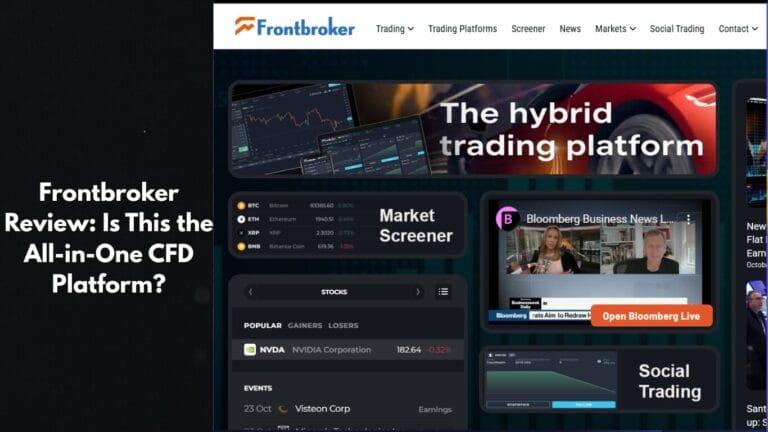In today’s dynamic and competitive business environment, using advanced revenue forecasting products has become essential for accurate predictions and proactive decision-making. This article explores the top 8 revenue forecasting products that help businesses navigate the complexities of revenue prediction and planning.
Table of Contents
Summary
- Streamline utilizes advanced predictive analytics and machine learning algorithms to generate highly accurate revenue forecasts, helping businesses make informed decisions.
- SAP Integrated Business Planning for Supply Chain provides detailed visibility into the entire supply chain, allowing for a holistic approach to revenue forecasting by considering all relevant factors from procurement to distribution.
- Fusion Cloud Supply Chain Planning utilizes advanced algorithms and machine learning to provide accurate demand forecasting, considering historical data, market trends, and seasonality.
- IBM Planning Analytics offers powerful what-if analysis tools, allowing businesses to simulate various scenarios and assess the impact of different variables on revenue forecasts.
- Anaplan enables collaborative revenue forecasting, allowing teams to work together in real-time to create accurate and comprehensive revenue projections.
- Coupa Supply Chain Design & Planning provides comprehensive visibility into the supply chain, allowing for a detailed understanding of the factors influencing revenue forecasts, including demand patterns, inventory levels, and supplier performance.
- NetSuite Demand Planning integrates demand forecasting with financial forecasting, providing a comprehensive view of revenue projections and their underlying financial implications.
- OMP Unison Planning employs complex statistical models to produce precise revenue predictions, considering historical data, seasonal variations, and trend analysis.
What are Revenue Forecasting Products?
Revenue forecasting products are tools or software designed to predict a company’s future income based on past data, market trends, and other relevant factors. These products use various statistical and analytical methods to generate forecasts, helping businesses make informed decisions about resource allocation, budgeting, and goal setting. They can range from simple spreadsheet templates to complex, AI-powered platforms, offering different levels of accuracy and customization. Revenue forecasting products are essential for financial planning, risk management, and overall business strategy, providing valuable insights into potential revenue streams and helping organizations adapt to changing market conditions.
9 Best Revenue Forecasting Products
Baremetrics
- Baremetrics revenue forecasting platform offers accurate and reliable revenue predictions for businesses.
- The platform’s exclusive features include customizable forecasting models tailored to specific business needs.
- It offers scenario planning and “what-if” analysis to simulate various business situations and their impact on revenue.
- Control Center provides a centralized dashboard for managing and monitoring revenue forecasting activities.
- Segmentation allows users to segment and analyze revenue data based on various parameters, providing deeper insights into different aspects of the business.
- Trial Insights offers valuable data and analytics related to trial usage and conversion rates, aiding in understanding customer behavior during trial periods.
- Cancellation Insights provides insights into customer cancellations, helping businesses understand the reasons behind customer churn.
- Recover with Failing Charges offers tools to recover revenue from failed charges, minimizing revenue loss due to payment issues.
- Augmentation provides features to enhance revenue forecasting accuracy and effectiveness through advanced algorithms and data analysis.

Streamline
- Streamline utilizes advanced predictive analytics and machine learning algorithms to generate highly accurate revenue forecasts, helping businesses make informed decisions.
- The platform offers customizable dashboards, allowing users to visualize and interpret forecasted data to best suit their needs and preferences.
- Streamline seamlessly integrates with various data sources, enabling comprehensive revenue forecasting based on real-time information from sales, marketing, and other relevant sources.
- The platform provides real-time forecasting capabilities, allowing businesses to adjust swiftly to changing market conditions and make timely adjustments to their revenue projections.
- Streamline enables users to create and analyze multiple revenue forecast scenarios, helping them understand the potential impact of different variables on their financial outcomes.
- With an intuitive and user-friendly interface, Streamline makes revenue forecasting accessible to many users, from financial analysts to business executives.
- Leveraging machine learning, Streamline continuously improves forecast accuracy by learning from historical data and adjusting to changing market dynamics.
- Streamline offers collaboration tools that facilitate user teamwork and knowledge sharing, ensuring that revenue forecasts benefit from diverse insights and expertise within the organization.
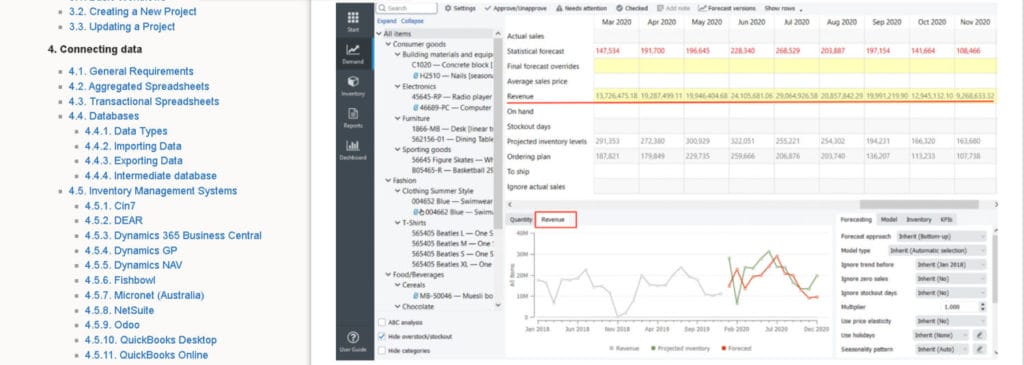
SAP Integrated Business Planning for Supply Chain
- SAP Integrated Business Planning for Supply Chain provides comprehensive visibility into the entire supply chain, allowing for a holistic approach to revenue forecasting by considering all relevant factors from procurement to distribution.
- The platform leverages machine learning and advanced algorithm capabilities to analyze historical data, market trends, and external factors, resulting in highly accurate revenue forecasts.
- Exclusive scenario modeling tools enable users to simulate various supply chain and market scenarios to understand how variables impact revenue forecasts.
- The platform seamlessly integrates with SAP’s suite of business applications, ensuring that revenue forecasting is aligned with other critical business processes.
- SAP Integrated Business Planning for Supply Chain helps real-time data analysis, allowing businesses to make revenue forecasts based on the most up-to-date information across the supply chain.
- The platform is outlined to be scalable and flexible, catering to the needs of businesses of all sizes, from small to large corporations, and accommodating changes in demand and supply chain complexity.
- The platform incorporates demand-sensing capabilities, enabling businesses to capture real-time demand signals and adjust revenue forecasts accordingly.
- SAP Integrated Business Planning for Supply Chain facilitates collaborative revenue forecasting, allowing cross-functional teams to contribute to the process and align revenue forecasts with various business functions.
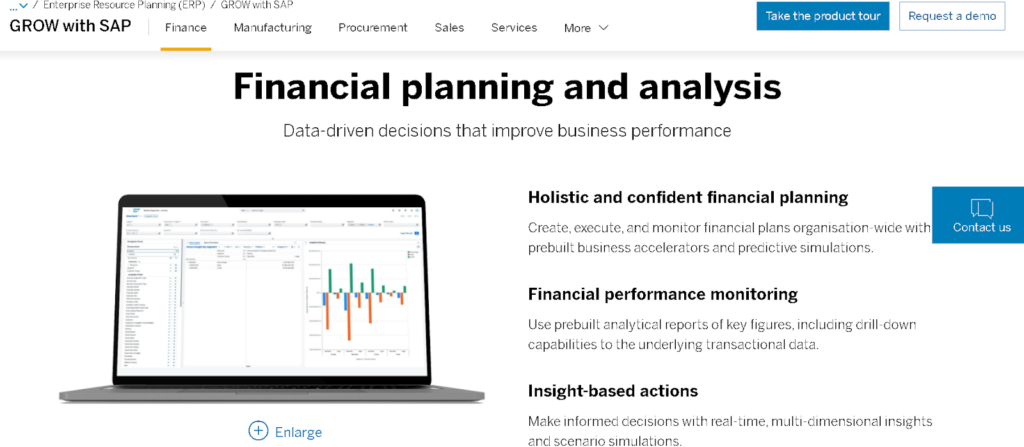
Oracle Fusion Cloud Supply Chain Planning
- Oracle Fusion Cloud Supply Chain Planning utilizes advanced algorithms and machine learning to provide accurate demand forecasting, considering historical data, market trends, and seasonality.
- The platform offers integrated inventory optimization capabilities, allowing businesses to align revenue forecasts with optimal inventory levels, reducing carrying costs while meeting customer demand.
- Exclusive scenario modeling tools enable businesses to simulate various what-if scenarios, such as changes in market conditions or supply chain disruptions.
- The platform facilitates collaborative forecasting, allowing cross-functional teams to contribute to revenue forecasts based on their unique insights and expertise.
- Oracle Fusion Cloud Supply Chain Planning seamlessly integrates with various data sources, ensuring that revenue forecasts are based on the latest information from sales, marketing, and supply chain operations.
- The platform’s scalability and flexibility make it suitable for businesses of all sizes, from small to large corporations, offering customizable forecasting models to meet diverse business needs.
- The platform enables businesses to align revenue forecasts with supply chain operations by providing end-to-end visibility into the supply chain.
- Leveraging AI capabilities, it provides actionable insights into revenue forecasting, helping make informed decisions and adapt to changing market dynamics.
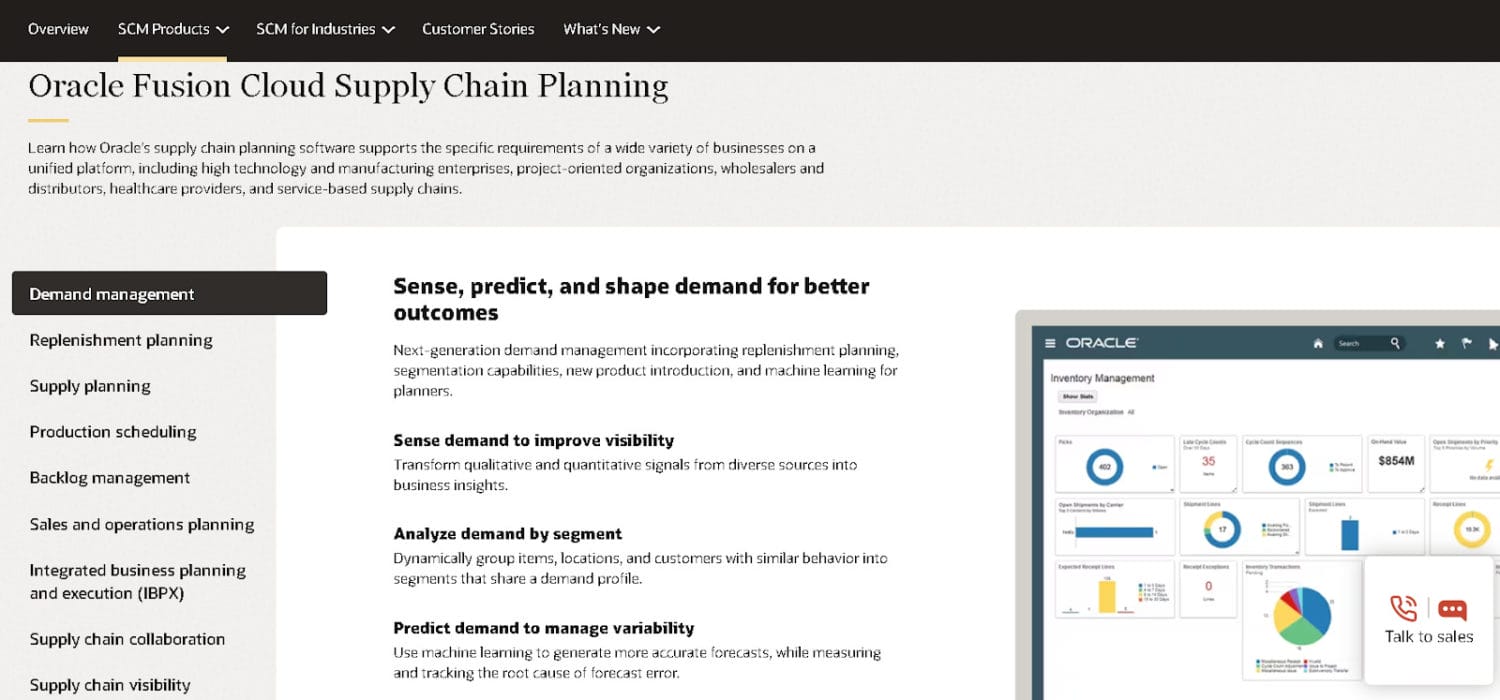
IBM Planning Analytics
- IBM Planning Analytics offers powerful what-if analysis tools, allowing businesses to simulate various scenarios and assess the impact of different variables on revenue forecasts.
- The platform seamlessly integrates financial planning and budgeting features, enabling organizations to align revenue forecasts with overall financial strategies.
- Leveraging IBM’s data analytics and AI capabilities, the platform enhances the accuracy and reliability of revenue forecasts by utilizing advanced algorithms and machine learning.
- IBM Planning Analytics ensures real-time data synchronization, enabling businesses to base revenue forecasts on the latest information from sales, marketing, and supply chain operations, enhancing the timeliness and accuracy of forecasts.
- The platform’s scalability and flexibility make it suitable for enterprises of all sizes, from small to large corporations, providing one versatile solution.
- IBM Planning Analytics offers a user-friendly interface and personalized dashboards, making it easy for businesses to visualize and interpret the forecasted data.
- The platform facilitates collaborative forecasting and planning, allowing teams to work together on real-time revenue forecasts, promoting cross-functional alignment and collective decision-making.
- IBM Planning Analytics integrates seamlessly with IBM’s suite of business applications, ensuring a seamless flow of data and information across different functions and enhancing the efficiency and accuracy of revenue forecasting processes.
- You can compare plans and development options using their calculator to get the pricing of services provided by them.

Anaplan
- Anaplan enables collaborative revenue forecasting, allowing teams to work together in real-time to create accurate and comprehensive revenue projections.
- The platform offers robust scenario modeling tools, empowering businesses to create and compare multiple revenue forecast scenarios.
- Anaplan integrates with various data sources, ensuring that revenue forecasts are based on the latest information from sales, marketing, etc.
- Anaplan leverages predictive analytics to analyze historical data and market trends, enabling businesses to generate accurate forecasts and anticipate future revenue streams.
- The platform provides customizable dashboards and reporting tools, allowing businesses to visualize and interpret revenue forecast data.
- Anaplan’s scalability makes it suitable for businesses of all sizes, from small to large corporations, helping their varying needs for revenue forecasting.
- Anaplan seamlessly integrates with other business systems, such as CRM and ERP platforms, ensuring a holistic approach to revenue forecasting.
- Anaplan offers a user-friendly interface, making it easy for business users to navigate the platform, input data, and derive meaningful insights from revenue forecasting.
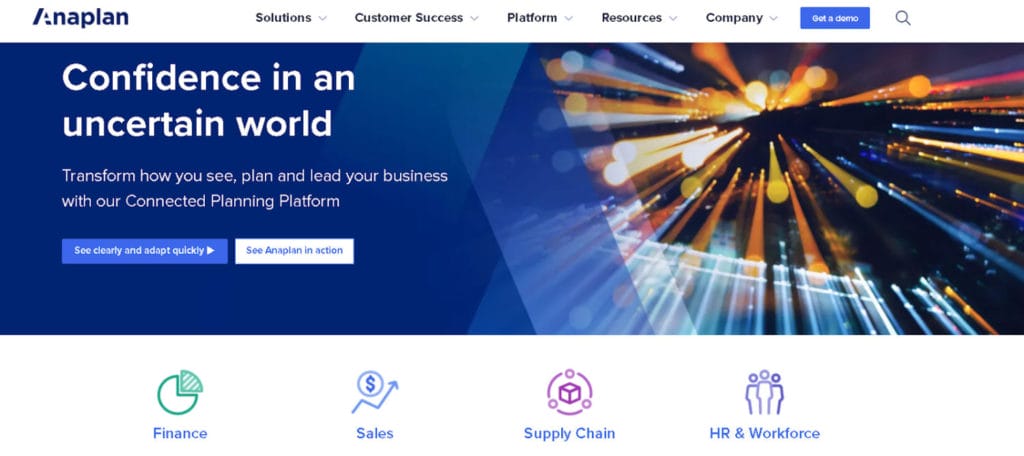
Coupa Supply Chain Design & Planning
- Coupa’s platform provides comprehensive visibility into the supply chain, allowing for a detailed understanding of the factors influencing revenue forecasts, including demand patterns, inventory levels, and supplier performance.
- It offers robust risk management features, enabling businesses to factor in potential disruptions and market uncertainties when forecasting revenue.
- Coupa’s predictive analytics capabilities help businesses anticipate changes in demand and market dynamics, allowing for proactive adjustments.
- The platform facilitates collaborative forecasting, enabling cross-functional teams to contribute to revenue forecasts based on their respective insights and expertise, leading to more accurate and well-informed predictions.
- Coupa’s scenario modeling tools allow businesses to create and assess multiple revenue forecast scenarios, helping them understand the potential impact of different variables on their financial projections.
- Coupa’s emphasis on sustainability and ethical sourcing aligns with responsible supply chain practices, ensuring environmental and social factors are considered.
- The platform focuses on demand-driven planning, aligning revenue forecasts with customer demand patterns and market trends, thus enabling businesses to adapt their forecasts to changing consumer behavior.
- Coupa’s real-time data synchronization ensures that revenue forecasts are based on the latest sales, marketing, and supply chain operations information.
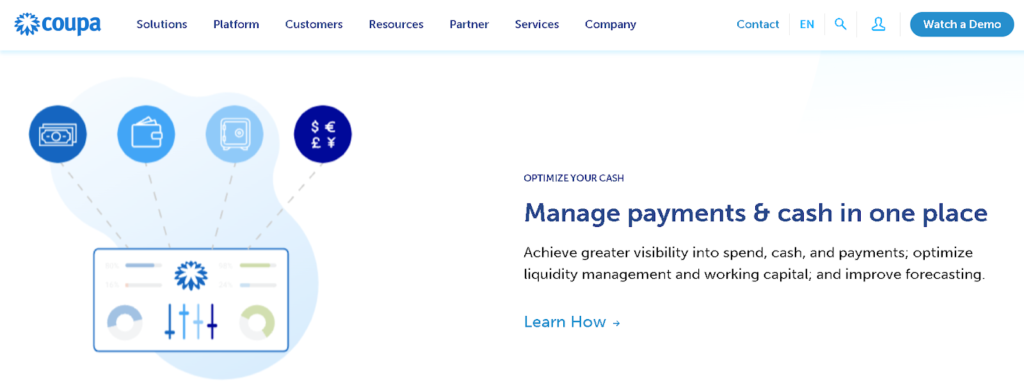
NetSuite Demand Planning
- NetSuite Demand Planning integrates demand forecasting with financial forecasting, providing a comprehensive view of revenue projections and their underlying financial implications.
- The platform offers collaborative planning tools that enable cross-functional teams to contribute to revenue forecasts based on their respective insights and expertise, fostering a more inclusive and accurate forecasting process.
- It ensures that revenue forecasts are based on the latest data from sales, marketing, supply chain operations, etc.
- The platform provides robust scenario modeling and simulation capabilities, allowing you to create and assess multiple revenue forecast scenarios.
- NetSuite Demand Planning offers customizable forecasting models, allowing businesses to tailor their revenue forecasts to specific product lines, customer segments, or geographical regions, enhancing accuracy.
- It leverages demand sensing and shaping techniques to anticipate changes in customer demand patterns, enabling businesses to adjust revenue forecasts proactively and align their operations with market dynamics.
- NetSuite Demand Planning utilizes advanced automated forecasting algorithms to analyze historical data and market trends, improving accuracy and reliability.
- Its scalability and flexibility make it suitable for enterprises of all sizes, from small to large corporations, offering tailored forecasting solutions that can grow with the organization’s needs.
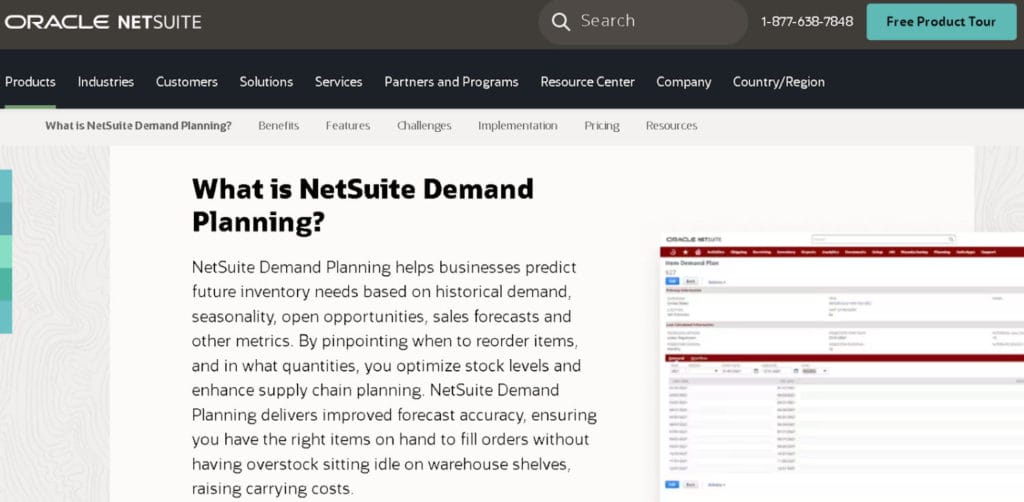
OMP Unison Planning
- OMP Unison Planning utilizes advanced statistical models to generate accurate revenue forecasts, considering historical data, seasonality, and trend analysis.
- The platform integrates revenue forecasting with inventory optimization, helping businesses minimize excess inventory costs while ensuring product availability to meet demand.
- OMP Unison Planning leverages machine learning algorithms to continuously improve forecast accuracy by adapting to changing market dynamics and demand patterns.
- The platform focuses on demand-driven planning, aligning revenue forecasts with customer demand patterns and market trends to ensure proactive forecasting.
- OMP Unison Planning facilitates collaborative forecasting, allowing cross-functional teams to contribute to revenue forecasts based on their insights and expertise.
- The platform offers scenario modeling tools, enabling businesses to create and assess multiple revenue forecast scenarios.
- It ensures revenue forecasts are based on the latest sales, marketing, and supply chain operations information through real-time data synchronization.
- The platform integrates revenue forecasting with financial planning, giving a detailed view of revenue projections and their alignment with overall financial strategies.

Conclusion
Through revenue forecasting products at the forefront of technological innovation, businesses are provided with the capabilities to generate accurate forecasts, integrate financial planning, optimize inventory, and align revenue projections with market demand. As organizations strive to adapt to changing market conditions and achieve sustainable growth, these revenue forecasting products will be pivotal in driving informed decision-making and financial success.
How do revenue forecasting products work?
Revenue forecasting products work by analyzing past data, market trends, and other factors to generate predictions about a company’s future income. They use statistical and analytical methods, such as machine learning and predictive analytics, to produce accurate forecasts that help enterprises make informed decisions about resource allocation, budgeting, and goal setting.
What are the key features of revenue forecasting products?
Key features of revenue forecasting products include advanced predictive analytics, customizable dashboards for data visualization, seamless integration with various data sources, real-time forecasting capabilities, scenario modeling tools for creating and analyzing multiple forecast scenarios, machine learning capabilities for continuous improvement of forecast accuracy, and collaboration tools for teamwork and knowledge sharing.
How can businesses benefit from using revenue forecasting products?
Businesses can benefit from revenue forecasting products by gaining insights into potential revenue streams, making informed decisions about resource allocation and budgeting, adapting to changing market conditions, and aligning revenue projections with overall financial strategies. These products help businesses optimize inventory, anticipate changes in demand, and ensure proactive and responsive forecasting.

